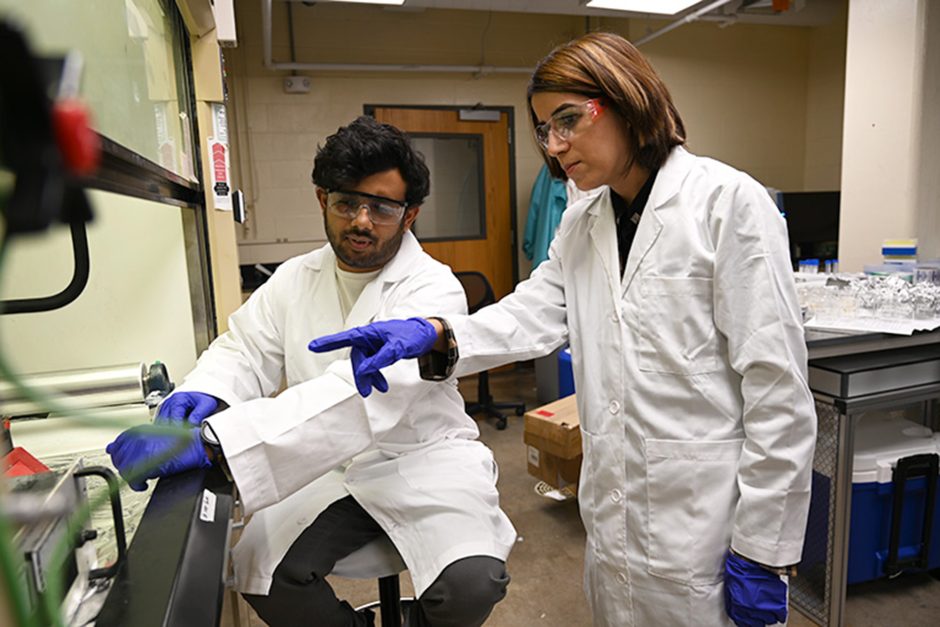
Sept. 16, 2024
Contact: Janese Heavin, heavinj@missouri.edu
Photo by Zac Anderson
Water filters on the market today can remove some contaminants, but they’re not designed to capture microplastics. In fact, some of them may actually add small plastics into drinking water during the filtration process. What’s worse is these microplastics can cause inflammation, increase the risk of cancer and act as carriers for harmful chemicals that trigger other health problems.
University of Missouri researcher Maryam Salehi and collaborators are coming up with a new way to trap those tiny invaders — and protect the public — through a fabric-like filter.
“The idea is to design a filter that can be attached to a faucet so it can remove microplastic and lead at the same time from tap water,” said Salehi, an assistant professor of civil and environmental engineering in Mizzou’s College of Engineering. “We’re envisioning an inexpensive point-of-use filter that could connect to any faucet.”
The filter membrane is made from polyvinyl alcohol fibers, which are polymers currently used in biomedical applications. The team chose the material because it’s low-cost and biocompatible, meaning it’s not toxic to humans, animals or plants.
It’s also proving to be effective. In lab tests, the membrane was able to remove nearly 100% of larger microplastics and nearly 80% of the smallest microplastics, while at the same time removing about 70% of lead contamination.
“We still need to test the filter to see how it tolerates other conditions — such as disinfectant use in water — but the idea is to hopefully have something that can be commercialized and used to easily purify tap water,” Salehi said.
The team outlined their findings in a cover article published in Applied Polymer Science. Co-authors were Anandu Gopakumar Nair, a doctoral student at Mizzou, Alexander Ccanccapa, a post-doctoral researcher, and Kati Bell, an industry partner. The work is supported by Brown and Caldwell, as well as the National Science Foundation.
Salehi is a core researcher at the Missouri Water Center, which brings together stakeholders from academia, industry and government to advance water research.



